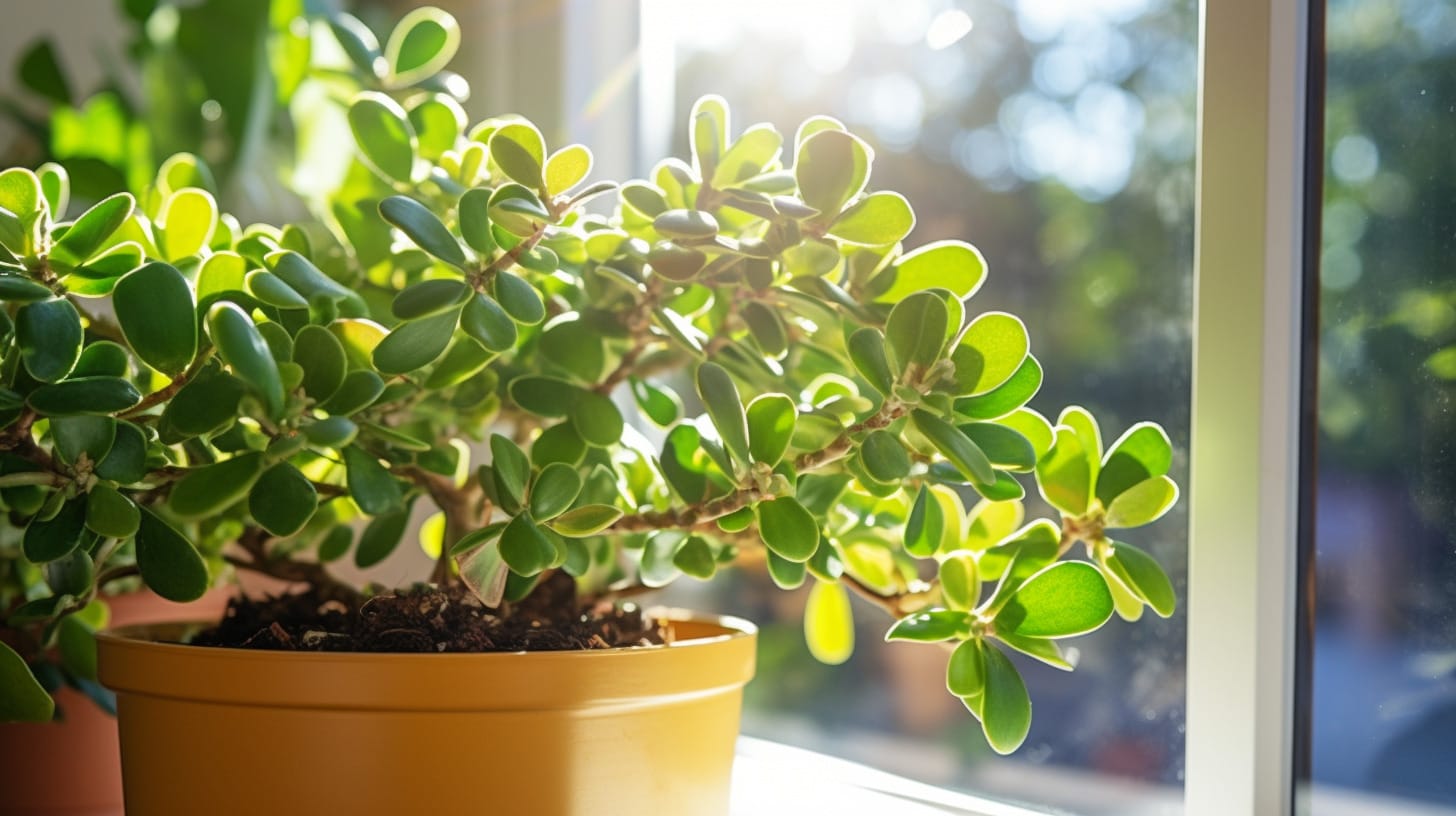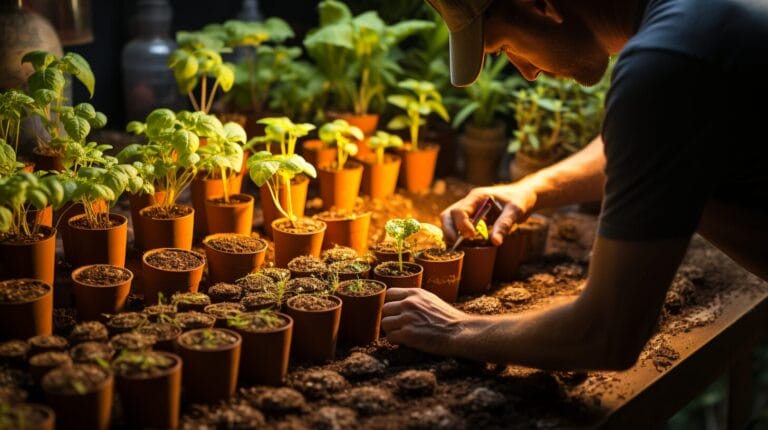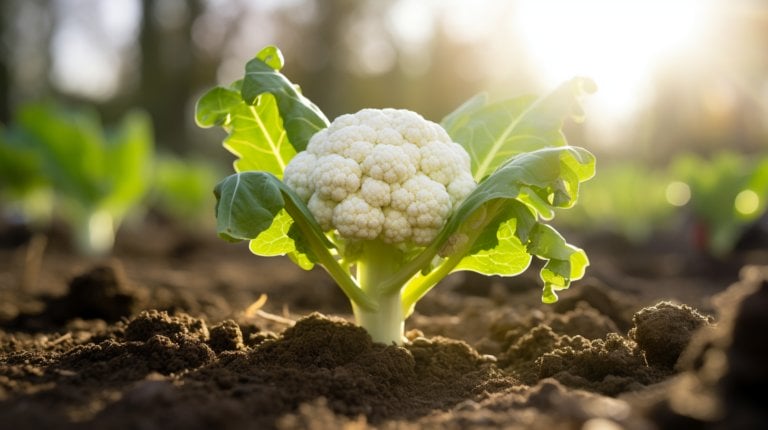Powdery Mildew Jade Plant: Proven Tips to Treat Your Plant
Usually, the vibrant green leaves of a jade plant evoke images of serene, peaceful garden sanctuaries. But, finding white patches spoiling its lustrous surface can indeed be both distressing and worrisome. Over time, as an experienced custodian of these hardy succulents, I have gained the ability to recognize the standard symptoms of powdery mildew on jade plants, and furthermore, developed effective techniques to fight against it.
These white patches may seem innocuous but are indeed red flags for your plant’s well-being. The following article offers a compendium of wisdom—battle-tested tactics for revitalizing your affected botanic companions.
Equipped with these insights—the fruit of dedicated trial and error and commitment to plant health—you’re well-prepared to reclaim your plant’s verdant luster from this fungal invader. Let’s ready our gardening gloves; it’s time to restore your jade plant’s vibrancy!
Key Takeaways
- Identifying powdery mildew is critical; it manifests as white or gray patches that can mimic signs of overfertilization or hard water deposits.
- Combat powdery mildew with timely pruning of infected leaves, employing proven fungicides such as sulfur and potassium bicarbonate and adhering to good cultural practices like ensuring airflow and proper sunlight.
- Preventative measures against powdery mildew include judicious watering, using potting soil that prevents waterlogging, maintaining ideal temperature, and recognizing signs of succulent stress. Sufficient sunlight and ventilation are fundamental in prevention.
Identifying White Spots on Jade Plants
Jade plant with white spots may indicate powdery mildew, presenting as white or gray patches. It’s imperative to accurately diagnose these spots, as they could also stem from overfertilization or hard water use.
Powdery Mildew: A Common Culprit
Powdery mildew often emerges stealthily, dusting the lower leaves first with troublesome white or gray spots. This fungus thrives by consuming the plant’s living tissue, leading to leaf yellowing, desiccation, and potential defoliation. To curb its spread, I promptly prune any affected leaves or stems—a necessary thoroughness to prevent recurrence.
Post-pruning, treating your jade with a sulfur-based fungicide can provide protection and aid recovery. Adequate sunlight and airflow are also crucial, creating an uninhabitable environment for the fungus.
Other Causes: Overfertilizing and Hard Water
Sometimes, the white spots are due to excessive fertilization or hard water. Excess fertilizer can lead to salt buildup, and hard water might leave mineral deposits behind. Filtered or distilled water can prevent such issues and fortify the plant against potential fungal infections.
Understanding Powdery Mildew
Powdery mildew, a fungal disorder, often afflicts jade plants with white, powdery spots on leaves and stems, flourishing in humid conditions and spreading via airborne spores. Recognizing symptoms and understanding this fungus’s behavior is essential for effective management and prevention.
Symptoms and Diagnosis
Indicators of powdery mildew include:
- White or grayish flour-like dust on lower leaves.
- Leaf yellowness.
- Brown or dried foliage.
- Unexplained leaf drop.
- Mustiness.
Plant placement affects susceptibility, with stagnant air encouraging fungal growth.
The Science Behind the Fungus
This fungus, Podosphaera xanthii, attacks the plant’s cells to siphon nutrients. It proliferates rapidly in stagnant air, impeding photosynthesis and nutrient absorption. However, fungicides can disrupt its progress and maintain plant health.
Combating Powdery Mildew Jade Plants
Effectively managing powdery mildew on jade plants involves strategic fungicide application and cultural adjustments. Potassium bicarbonate or thiophanate-based fungicides are advantageous while fostering proper air and light conditions and preventing fungal proliferation.
Effective Fungicide Use
Strategic fungicide selection and application are pivotal. Employ sulfur fungicides and potassium bicarbonate-based homemade solutions, and consider neem oil as an organic alternative. Maintaining appropriate humidity and airflow mitigates spore dispersion.
Cultural Practices for Prevention
Preventative cultural practices include ensuring airflow, providing ample sunlight, regulating watering, employing suitable potting soil, and maintaining stable temperatures—each contributing to minimizing disease susceptibility.
Importance of Light and Ventilation
Ample sunlight and adequate ventilation are vital in deterring powdery mildew, with at least 6 hours of daily sunlight recommended. Thinning the foliage can enhance airflow, which is critical for prevention.
Additional Tips for Jade Plant Care

Water your jade plant sparingly during dormancy and maintain optimal fertilization levels to circumvent stress. Remain vigilant for stress indications—yellowing leaves, wilting, or discoloration—and adjust care as needed for the plant’s well-being.
Watering During Dormancy
Water infrequently for a healthy dormant jade plant, about every 2-3 weeks, using filtered or distilled water to prevent salt accumulation.
Managing Fertilization
Fertilize actively growing jade plants with diluted balanced liquid fertilizer, avoiding fertilization during dormancy to allow for natural recovery and preparation for the growing season.
Recognizing Stress Signs in Succulents
Key stress signs include yellowing, wrinkling, or mushy leaves, stunted growth, and leaf drop. These suggest issues from overwatering to insufficient light or nutrition.
Don’t let powdery mildew on your jade plant dampen your green thumb spirit! After mastering these proven tips, continue your plant care journey by learning why your tomato plant leaves are turning brown and curling.
Conclusion
Overcoming powdery mildew involves deliberate, informed action. Sanitation, fungicidal treatment, sunlight, and ventilation are pivotal. Embracing preventative care enhances plant health and mitigates succulent afflictions.
Expand your knowledge and consult with horticultural experts for personalized advice. Proactive measures today ensure thriving jade plants tomorrow.
FAQs
What is powdery mildew on a jade plant?
Powdery mildew is a fungal disease resulting in white or gray patches on jade plants.
How can I treat powdery mildew on my jade plant?
Mix baking soda, dish soap, and water to create an effective treatment spray.
Will treating my jade plant for powdery mildew harm it?
Properly applied, the remedy should be safe. Precise measurements are critical.
Can I prevent powdery mildew from spreading to other plants?
Yes, careful pruning of affected areas helps contain the fungus.
Are some jade plant types more resistant to powdery mildew?
Certain cultivars display increased resistance. Ask for these at your local nursery.
What conditions help prevent powdery mildew in jade plants?
An environment with good air movement and low humidity is less conducive to fungal growth.







